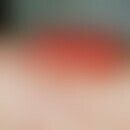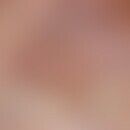Synonym(s)
LADS
DefinitionThis section has been translated automatically.
Rare congenital, autosomal recessive inherited defect of the adhesion cascade. A distinction is made between LAD type I (defect of the integrin family) and LAD type II (defect of the selectin system).
ClinicThis section has been translated automatically.
Characteristic are various recurring bacterial infections such as otitis media, skin infections (pyoderma, furunculosis) and possibly septic diseases. LADS is also associated with very aggressive periodontitis.
You might also be interested in
LaboratoryThis section has been translated automatically.
In most cases there is a clear leukocytosis in the peripheral blood (< 20/nl).
DiagnosisThis section has been translated automatically.
- Clinical suspicion of disturbances in granulocyte function. Indications are recurrent abscessing infections with localisation in spleen, liver or lymph nodes, infections of the skin and mucous membranes with unusually severe course, wound healing disorders.
- Detection of atypical pathogens.
- Familial clustering.
- Laboratory: Examination of leukocyte adhesion from the blood (EDTA blood).
Note(s)This section has been translated automatically.
- The adhesion of the leukocytes to the endothelial cells of the postcapillary venules is determined by the expression of the adhesion molecules on the cell surface. In leukocyte adhesion to the vascular endothelium, the ß-integrins with the common alpha chain CD18 are mainly involved. The expression is stimulated by bacterial lipopolysaccharide and cytokines such as TNF, IL1a and IL-1b.
Notice! Adhesion to the endothelium enables granulocytes of the flowing blood to adhere to the endothelial cells and pass from the capillaries into the tissue. Disturbances in leukocyte adhesion do not allow the granulocytes to leave the blood and reach the site of infection, or only to an insufficient extent. This leads to increased susceptibility to infection.
Disclaimer
Please ask your physician for a reliable diagnosis. This website is only meant as a reference.




